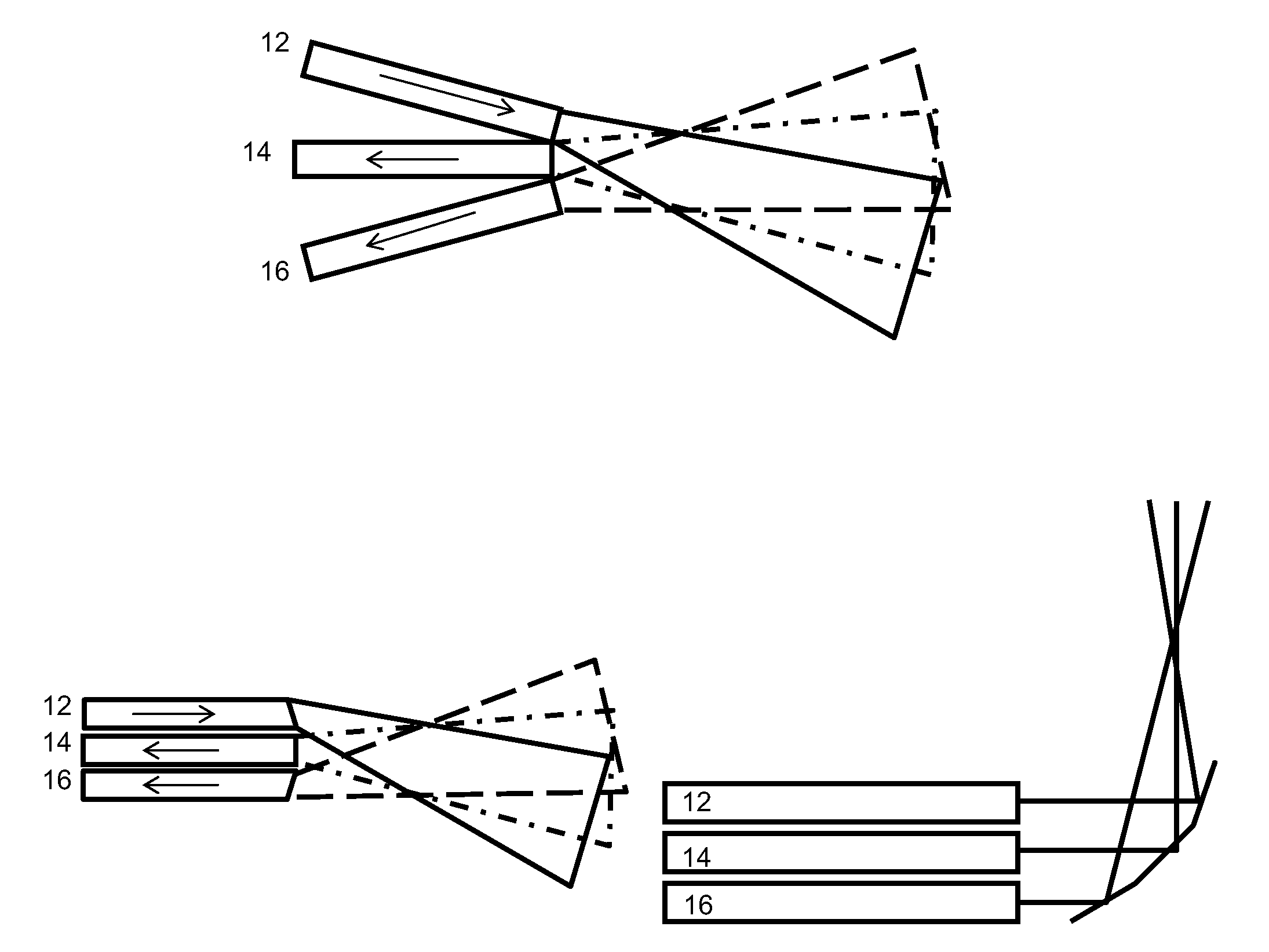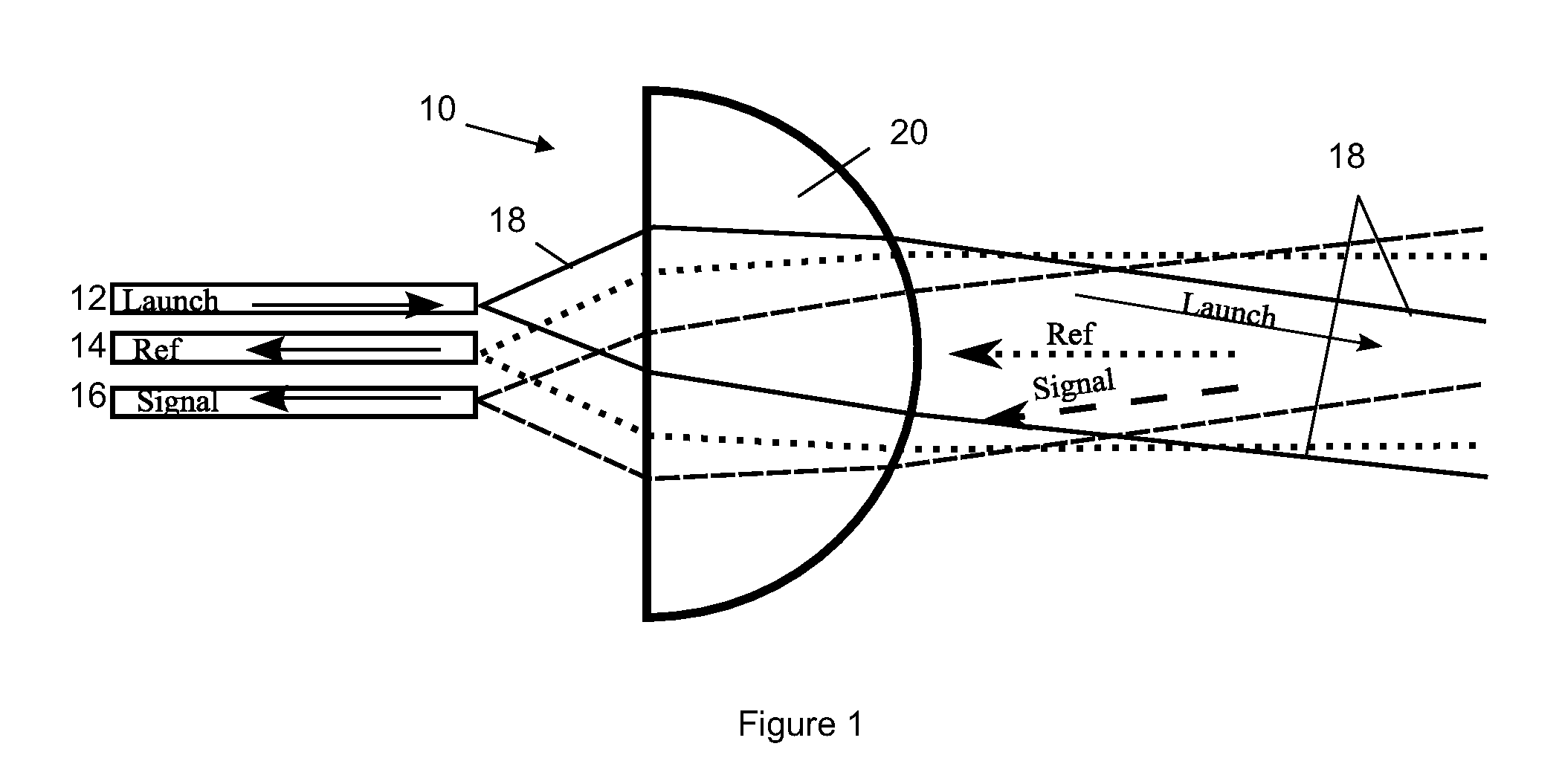Optical Blade Clearance Probe
a technology of optical probes and blade tips, applied in the field of improved optical probes, can solve the problems of reducing thrust, requiring additional fuel consumption, and reducing the energy of the system, so as to achieve the effect of maintenance, and reducing the cost of operation
- Summary
- Abstract
- Description
- Claims
- Application Information
AI Technical Summary
Benefits of technology
Problems solved by technology
Method used
Image
Examples
example
[0067]An experiment was conducted to establish the relationship between the distance between the distal ends of optical fibers 12, 14 and 16 to lens 20 and the dynamic range of probe 10. The fiber to lens distances of about 1.467 mm, 2.25 mm and 2.50 mm were tested. FIG. 13 shows ray trace diagrams of the optical system for three different values of the fiber to lens distance (top=1.467 mm, middle=2.250 mm, bottom=2.500 mm). The horizontal axis of the ray trace diagrams shows distance in millimeters with the left side of lens 20 at 0 mm. The launch point of light beam 18 is off the chart for the middle and bottom diagrams.
[0068]In each of the plots, the solid lines correspond to the path of the launched light, while the dashed line represents the field of view for the reference channel, and the dotted line is the field of view of the signal channel. Although not shown, window 24 is also accounted for, with the exterior face being located at the location of 3.1 mm. The three ray trac...
PUM
 Login to View More
Login to View More Abstract
Description
Claims
Application Information
 Login to View More
Login to View More - R&D
- Intellectual Property
- Life Sciences
- Materials
- Tech Scout
- Unparalleled Data Quality
- Higher Quality Content
- 60% Fewer Hallucinations
Browse by: Latest US Patents, China's latest patents, Technical Efficacy Thesaurus, Application Domain, Technology Topic, Popular Technical Reports.
© 2025 PatSnap. All rights reserved.Legal|Privacy policy|Modern Slavery Act Transparency Statement|Sitemap|About US| Contact US: help@patsnap.com



